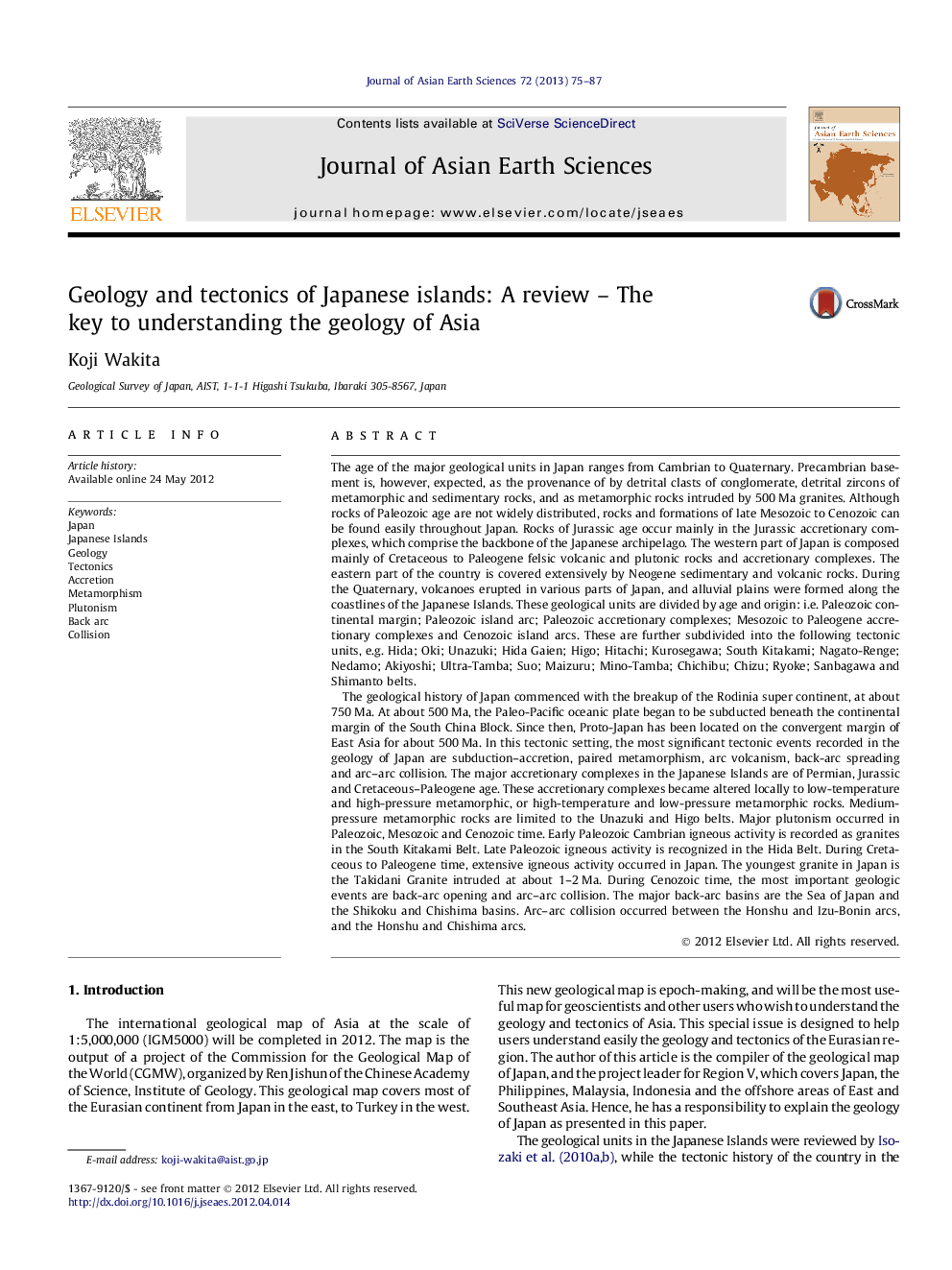| کد مقاله | کد نشریه | سال انتشار | مقاله انگلیسی | نسخه تمام متن |
|---|---|---|---|---|
| 4730967 | 1640395 | 2013 | 13 صفحه PDF | دانلود رایگان |
The age of the major geological units in Japan ranges from Cambrian to Quaternary. Precambrian basement is, however, expected, as the provenance of by detrital clasts of conglomerate, detrital zircons of metamorphic and sedimentary rocks, and as metamorphic rocks intruded by 500 Ma granites. Although rocks of Paleozoic age are not widely distributed, rocks and formations of late Mesozoic to Cenozoic can be found easily throughout Japan. Rocks of Jurassic age occur mainly in the Jurassic accretionary complexes, which comprise the backbone of the Japanese archipelago. The western part of Japan is composed mainly of Cretaceous to Paleogene felsic volcanic and plutonic rocks and accretionary complexes. The eastern part of the country is covered extensively by Neogene sedimentary and volcanic rocks. During the Quaternary, volcanoes erupted in various parts of Japan, and alluvial plains were formed along the coastlines of the Japanese Islands. These geological units are divided by age and origin: i.e. Paleozoic continental margin; Paleozoic island arc; Paleozoic accretionary complexes; Mesozoic to Paleogene accretionary complexes and Cenozoic island arcs. These are further subdivided into the following tectonic units, e.g. Hida; Oki; Unazuki; Hida Gaien; Higo; Hitachi; Kurosegawa; South Kitakami; Nagato-Renge; Nedamo; Akiyoshi; Ultra-Tamba; Suo; Maizuru; Mino-Tamba; Chichibu; Chizu; Ryoke; Sanbagawa and Shimanto belts.The geological history of Japan commenced with the breakup of the Rodinia super continent, at about 750 Ma. At about 500 Ma, the Paleo-Pacific oceanic plate began to be subducted beneath the continental margin of the South China Block. Since then, Proto-Japan has been located on the convergent margin of East Asia for about 500 Ma. In this tectonic setting, the most significant tectonic events recorded in the geology of Japan are subduction–accretion, paired metamorphism, arc volcanism, back-arc spreading and arc–arc collision. The major accretionary complexes in the Japanese Islands are of Permian, Jurassic and Cretaceous–Paleogene age. These accretionary complexes became altered locally to low-temperature and high-pressure metamorphic, or high-temperature and low-pressure metamorphic rocks. Medium-pressure metamorphic rocks are limited to the Unazuki and Higo belts. Major plutonism occurred in Paleozoic, Mesozoic and Cenozoic time. Early Paleozoic Cambrian igneous activity is recorded as granites in the South Kitakami Belt. Late Paleozoic igneous activity is recognized in the Hida Belt. During Cretaceous to Paleogene time, extensive igneous activity occurred in Japan. The youngest granite in Japan is the Takidani Granite intruded at about 1–2 Ma. During Cenozoic time, the most important geologic events are back-arc opening and arc–arc collision. The major back-arc basins are the Sea of Japan and the Shikoku and Chishima basins. Arc–arc collision occurred between the Honshu and Izu-Bonin arcs, and the Honshu and Chishima arcs.
► Twenty-five tectonic belts in Japan are distinguished and described.
► Tectonic belts in Japan are divided into four major categories.
► Japanese tectonic history is discussed on five major events.
Journal: Journal of Asian Earth Sciences - Volume 72, 10 August 2013, Pages 75–87
